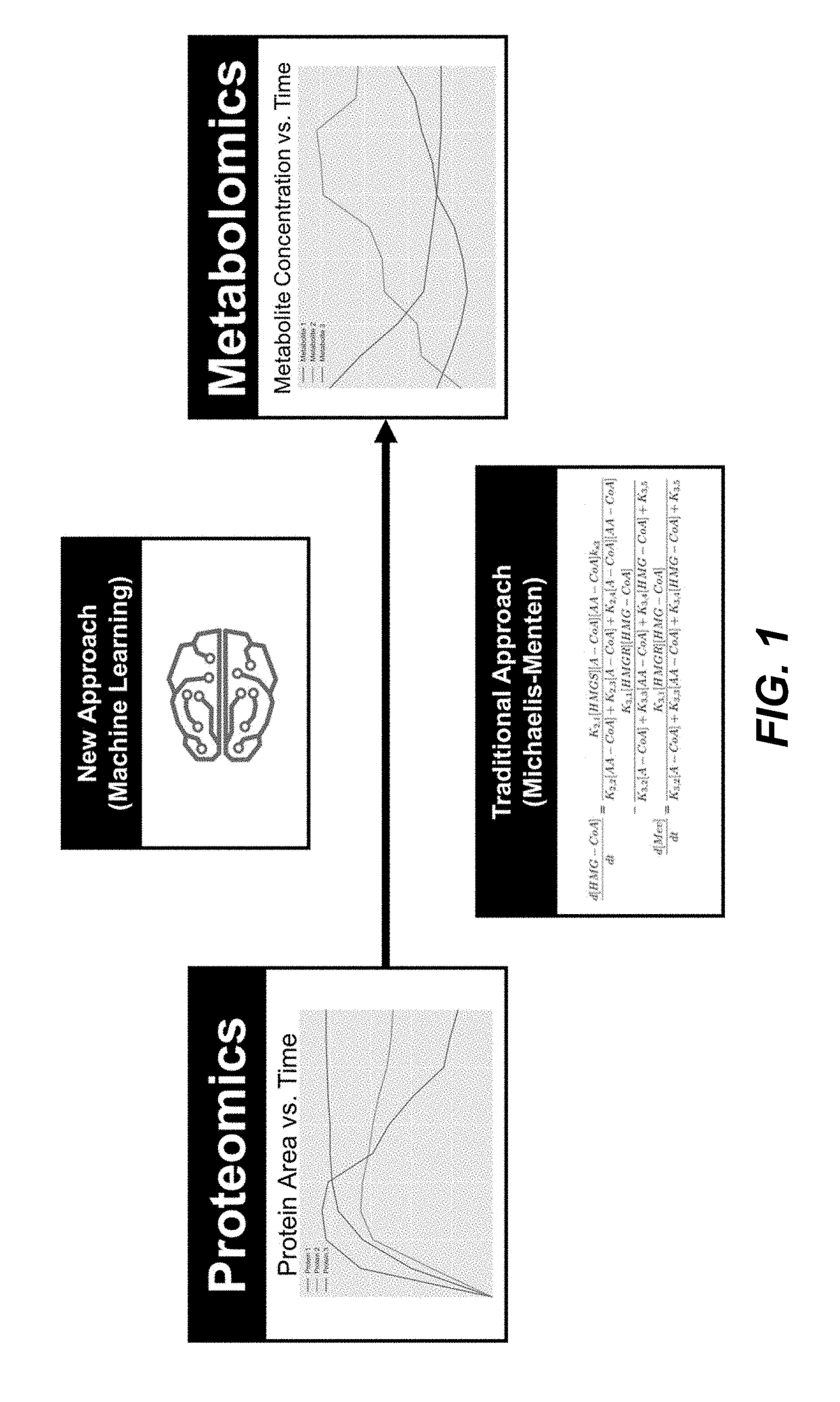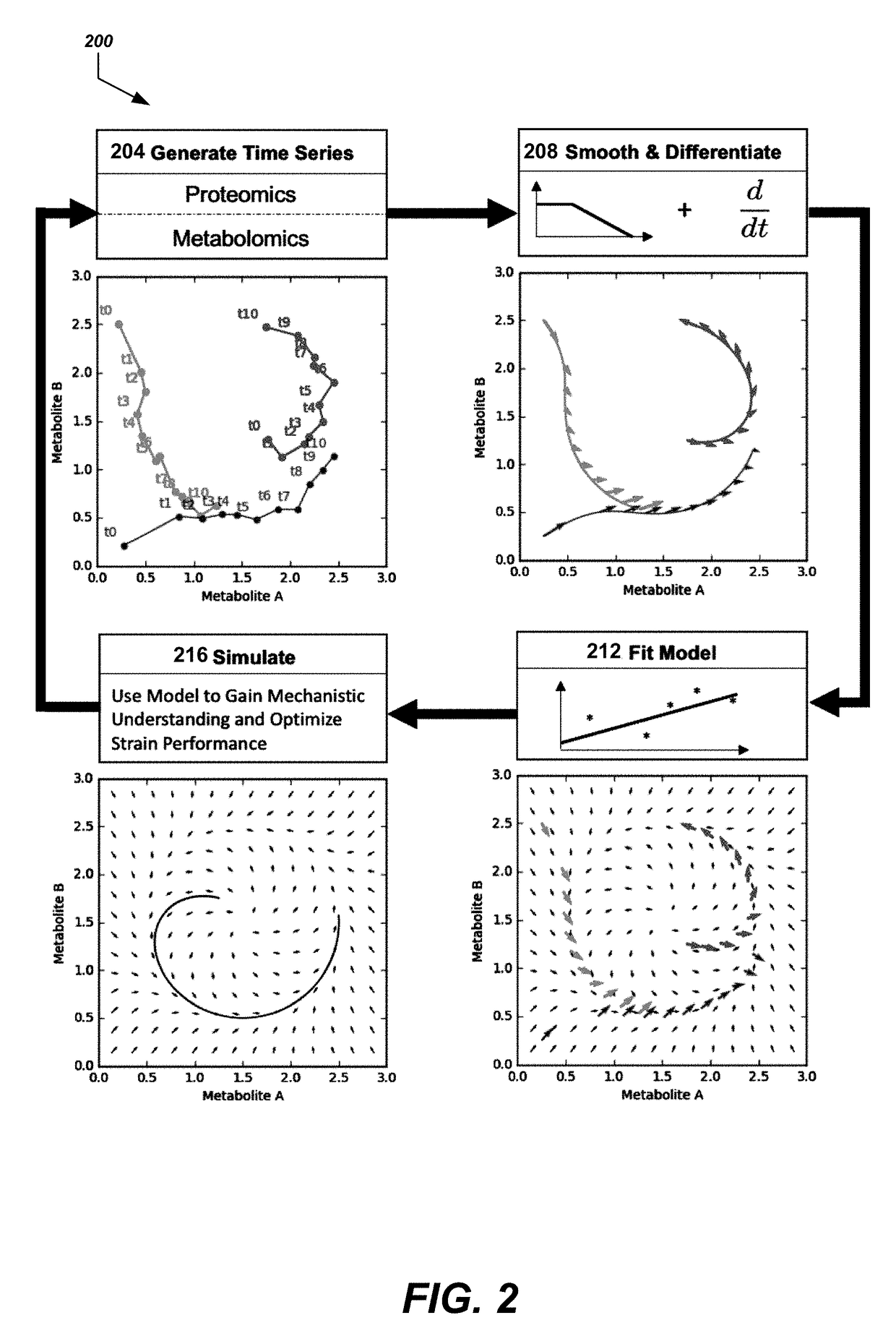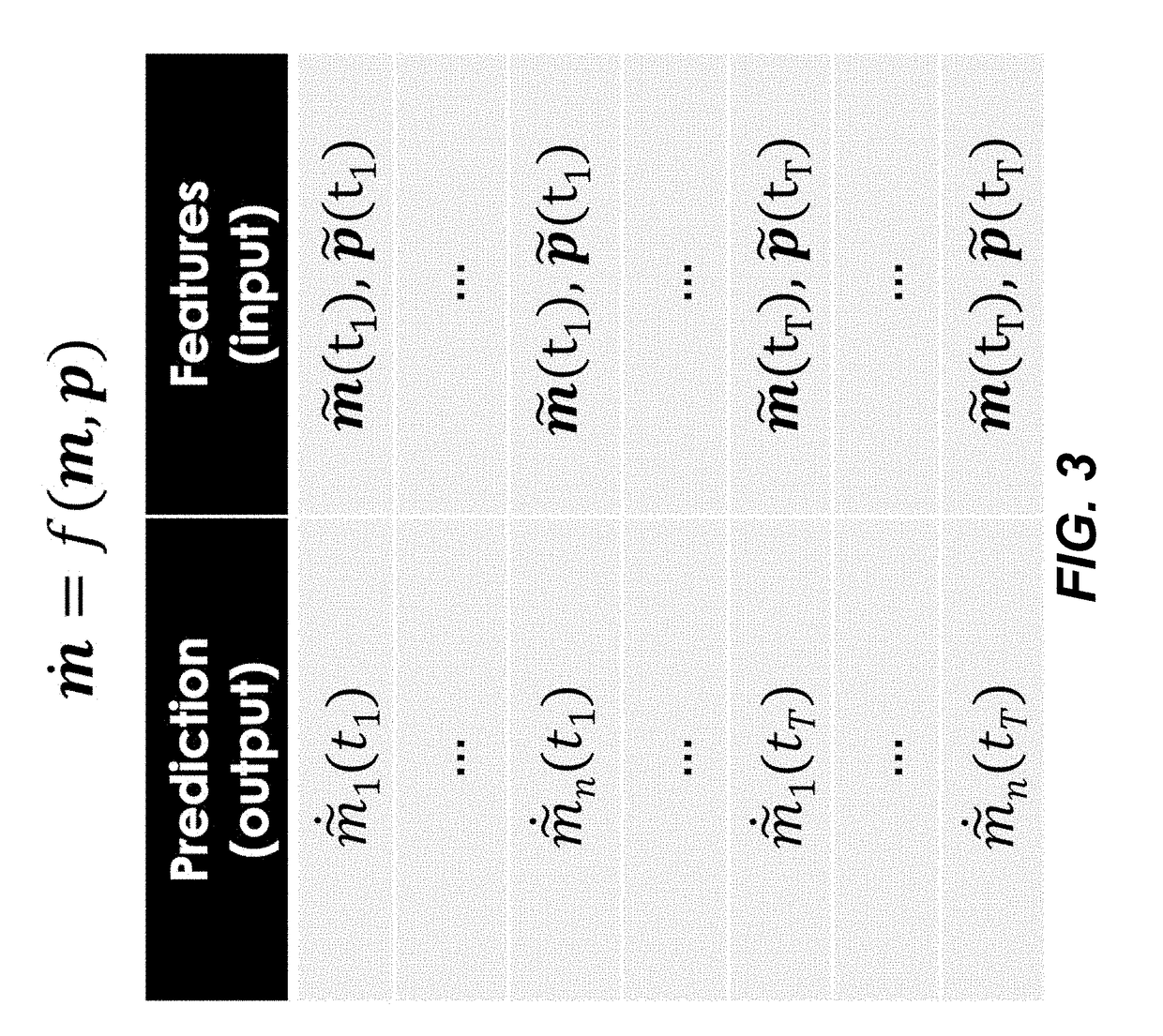Simulating the metabolic pathway dynamics of an organism
a metabolic pathway and simulation technology, applied in the field of computational biology, can solve the problems of insufficient accuracy and efficiency of predicting biological behavior, affecting the creation of new biological applications, and affecting the investment in new biological applications, and traditional models, such as models based solely on michaeles-menten kinetics, may be insufficient to achieve accurate and efficient prediction of biological behavior
- Summary
- Abstract
- Description
- Claims
- Application Information
AI Technical Summary
Benefits of technology
Problems solved by technology
Method used
Image
Examples
example 1
Determining Kinetic Models Using Meta Learning
[0110]This example demonstrates determining kinetic models using meta learning from time-series data using formulation I above.
[0111]The supervised learning method described above (FIGS. 1 and 2, Eqs. (1), (2), (3) and (4)) under Formulation I were used to predict pathway dynamics (i.e., metabolite concentrations as a function of time) from protein concentration data for two pathways of relevance to metabolic engineering and synthetic biology: a limonene producing pathway and an isopentenol producing pathway (FIG. 4). For each pathway, experimental times-series data obtained from the low and high biofuel producing strains were used as training data sets for a ML model, which was the used to predict the dynamics for the medium producing strains. TPOT was used to select the best pipelines it can find from the scikit-learn library combining 11 different regressors and 18 different preprocessing methods. This model selection process was done...
PUM
 Login to View More
Login to View More Abstract
Description
Claims
Application Information
 Login to View More
Login to View More - R&D
- Intellectual Property
- Life Sciences
- Materials
- Tech Scout
- Unparalleled Data Quality
- Higher Quality Content
- 60% Fewer Hallucinations
Browse by: Latest US Patents, China's latest patents, Technical Efficacy Thesaurus, Application Domain, Technology Topic, Popular Technical Reports.
© 2025 PatSnap. All rights reserved.Legal|Privacy policy|Modern Slavery Act Transparency Statement|Sitemap|About US| Contact US: help@patsnap.com



